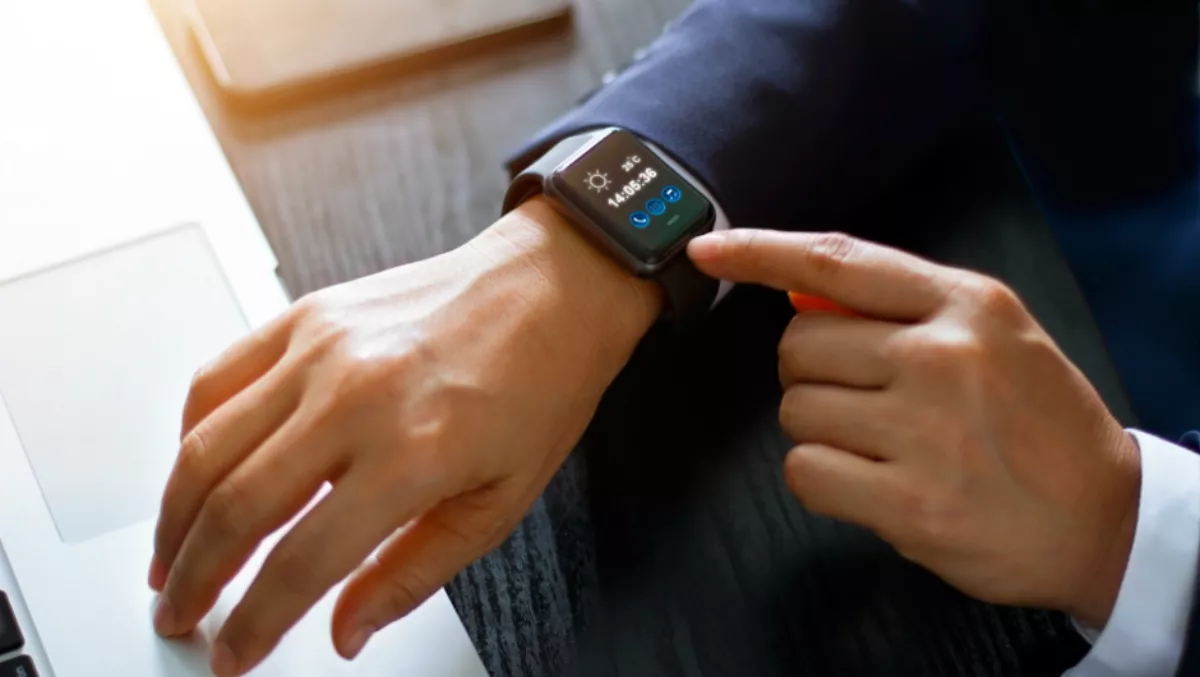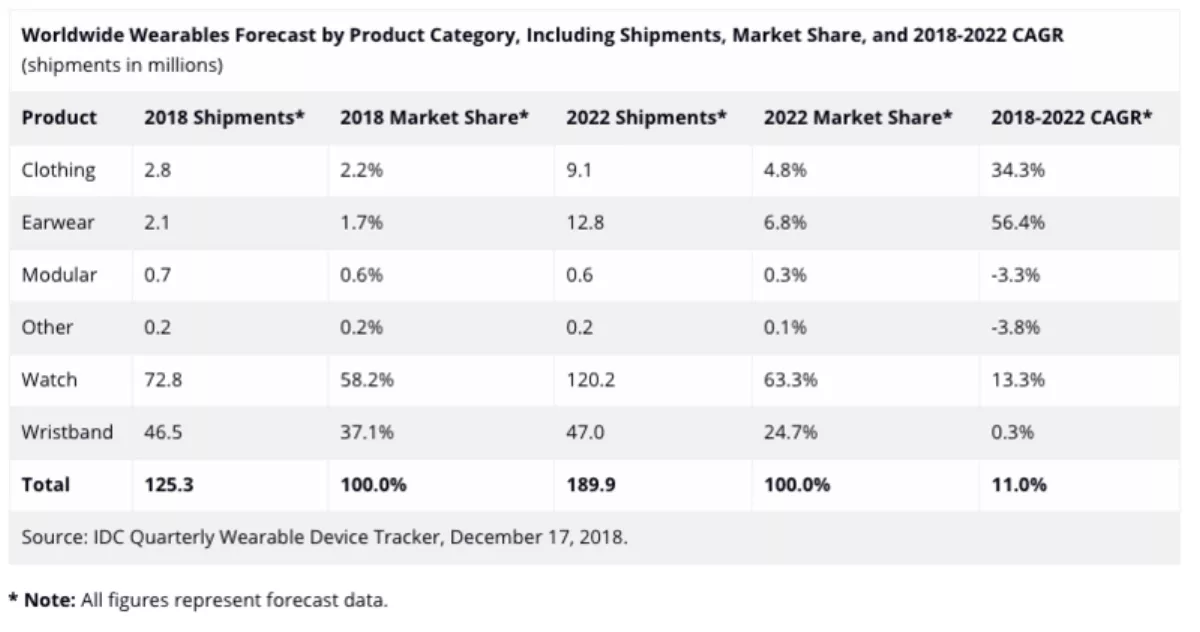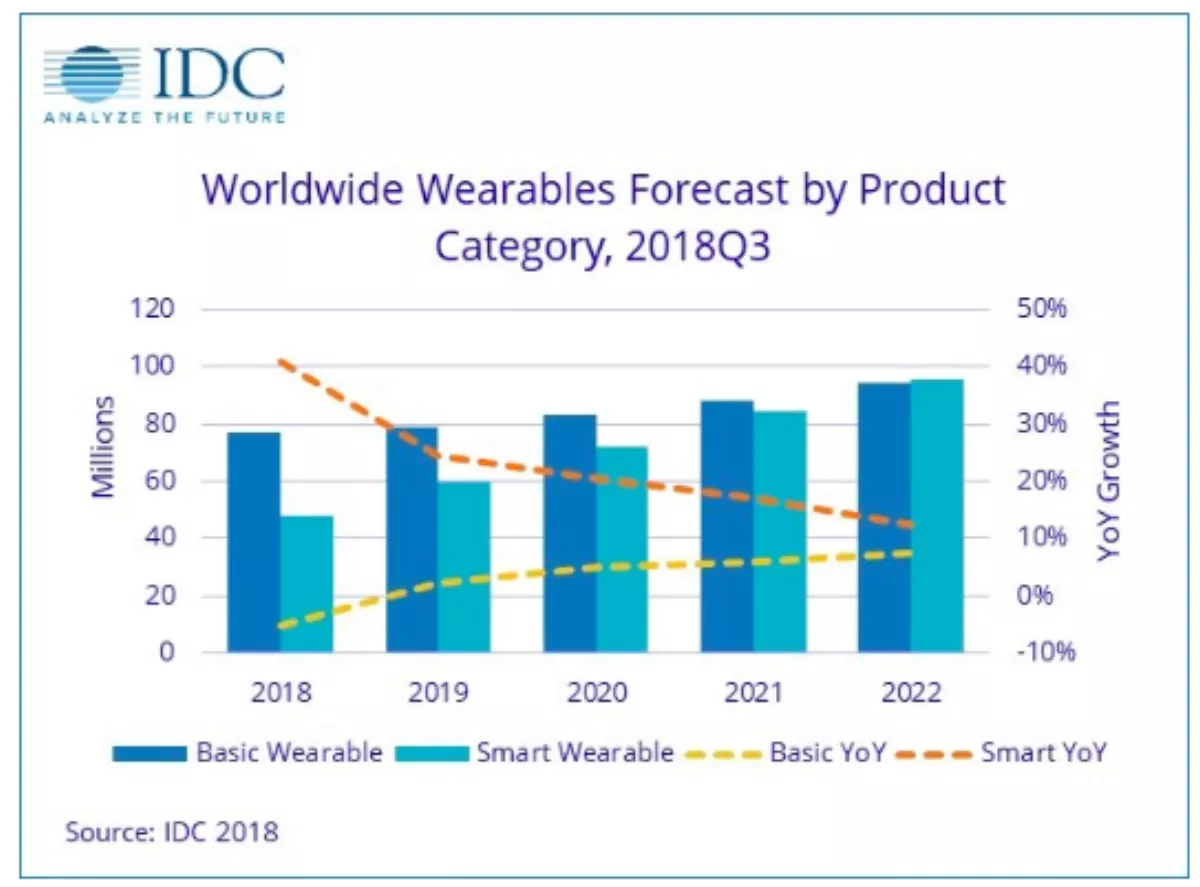
Wearables market flourishing - fuelled by smartwatches
A market that has stuttered in the past now has a bright forecast.
The International Data Corporation (IDC) expects sustained double-digit growth for the wearable devices market, with global shipments this year forecast to reach 125.3 million units – up 8.5 percent from 2017.
The combination of the growing popularity of smartwatches and greater wearables adoption in emerging markets is expected to produce a five-year compound annual growth rate (CAGR) of 11 percent with shipments surging to almost 190 million units in 2022.
"The transition from basic wearables to smart wearables will continue over the next five years as the two approach parity in terms of market share by 2022," says IDC Mobile Device Trackers senior research analyst Jitesh Ubrani.
"The rise of smart wearables will not just be in mature markets, but also from emerging markets in Asia/Pacific and elsewhere. Japan will play an equally important role as they consume more than one third of all smart wearables."

Among the smart wearable operating systems, Apple will maintain its position at the top with WatchOS, however, its share will decline from 44.4 percent in 2018 to 35.8 in 2022 as other platforms gain traction in the market.
Android is expected to be nipping on Apple's heels with a 22.4 percent market share in 2022 – IDC makes special mention not to confuse Android with WearOS, as the open source platform offers vendors an opportunity to customize the wearables' experience while creating differentiation.
IDC asserts that with Google's service being banned from China, many local brands have opted with this strategy and the proliferation of these devices is set to continue in many neighboring countries as well.
WearOS will account for 19.8 percent of the market in 2022 as further vendors begin to offer products and as the platform gains on competitors when it comes to features. The remainder of the market will be made up of smaller platforms and vendors, however, IDC says Samsung, Fitbit, and Garmin will dominate with their proprietary platforms.
"Expect smartwatch operating systems to evolve along several vectors in the coming years," says IDC Wearables research director Ramon T. Llamas.
"First, smartwatches will focus on convenience by proactively providing glanceable and actionable information to the user. Second, smartwatches will provide new means of communication between users, and this is where cellular connectivity will play a significant role in its development. Third, smartwatch operating systems will emphasize connection, not only between users but between wearers and other smart devices and systems. Finally, expect further developments focusing on health with the smartwatch playing a critical role in tracking your health goals and detecting potential ailments."

In terms of categories within the market, global shipments of watches are forecast to reach 72.8 million units in 2018 with smartwatches making up around two thirds of the total value.
Smartwatches aside, hybrid watches and some basic kids' watches are forecast to continue to ship in large volumes, but growth for these types of devices is expected to remain stagnant throughout the five-year forecast period.
Likewise, growth for the wristband category will remain flat with a 0.3 CAGR from 2018 to 2022. Despite this, IDC stresses this sector will still account for 24.7 percent of the total market by 2022 with the total volume reaching 47 million.
IDC expects these wearable devices to offer a host of benefits for the overall market, from acting as a stepping stone for first time buyers to serving as simplified versions of smartwatches – and that's not to mention the low cost of these products.
Earwear, which accounted for less than 2 percent of the market in 2018, is set to claim a 6.8 percent market share by 2022. The bulk of this growth is being driven by the gradual disappearance of the traditional headphone jack on modern devices.

